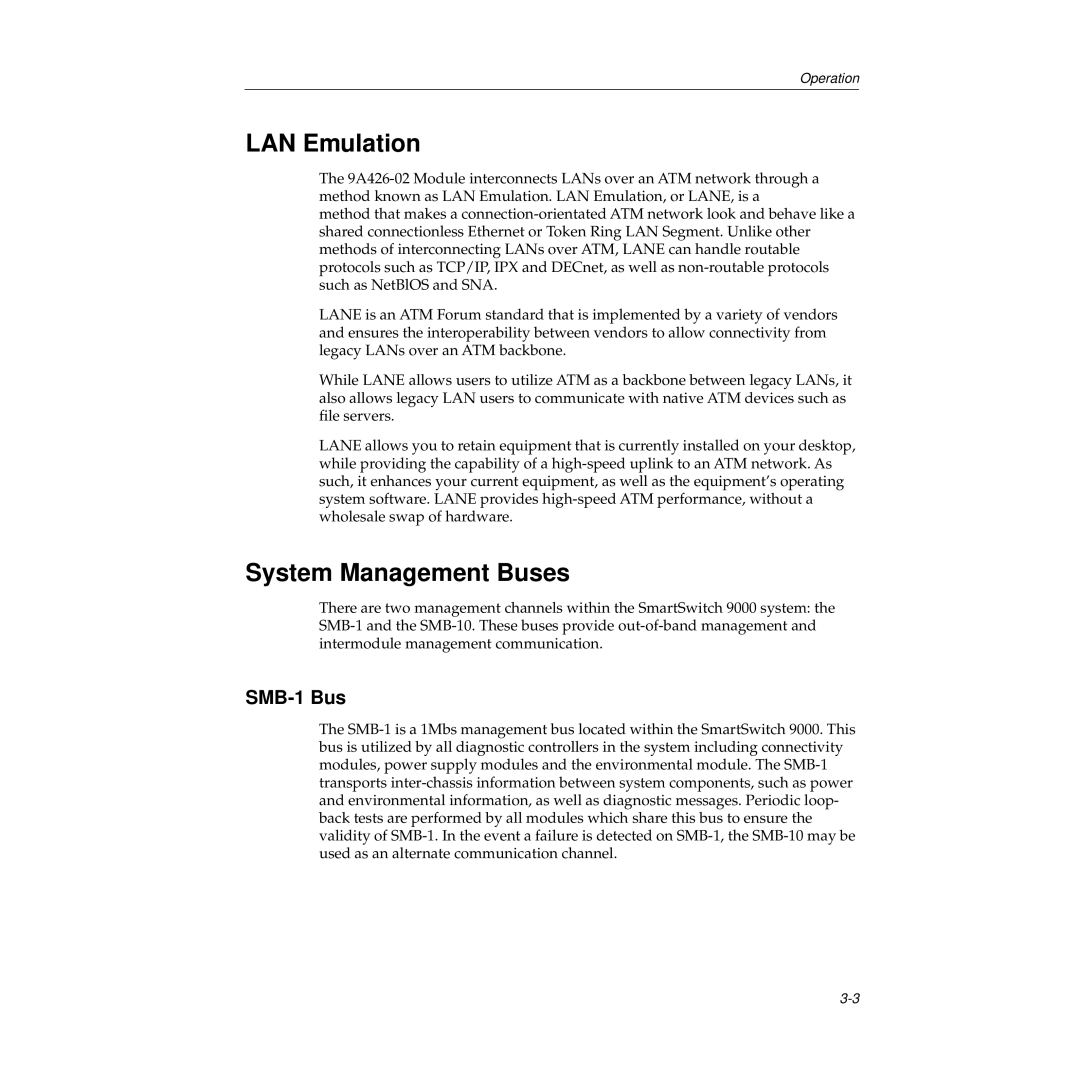Operation
LAN Emulation
The 9A426-02 Module interconnects LANs over an ATM network through a method known as LAN Emulation. LAN Emulation, or LANE, is a
method that makes a connection-orientated ATM network look and behave like a shared connectionless Ethernet or Token Ring LAN Segment. Unlike other methods of interconnecting LANs over ATM, LANE can handle routable protocols such as TCP/IP, IPX and DECnet, as well as non-routable protocols such as NetBlOS and SNA.
LANE is an ATM Forum standard that is implemented by a variety of vendors and ensures the interoperability between vendors to allow connectivity from legacy LANs over an ATM backbone.
While LANE allows users to utilize ATM as a backbone between legacy LANs, it also allows legacy LAN users to communicate with native ATM devices such as file servers.
LANE allows you to retain equipment that is currently installed on your desktop, while providing the capability of a high-speed uplink to an ATM network. As such, it enhances your current equipment, as well as the equipment’s operating system software. LANE provides high-speed ATM performance, without a wholesale swap of hardware.
System Management Buses
There are two management channels within the SmartSwitch 9000 system: the SMB-1 and the SMB-10. These buses provide out-of-band management and intermodule management communication.
SMB-1 Bus
The SMB-1 is a 1Mbs management bus located within the SmartSwitch 9000. This bus is utilized by all diagnostic controllers in the system including connectivity modules, power supply modules and the environmental module. The SMB-1 transports inter-chassis information between system components, such as power and environmental information, as well as diagnostic messages. Periodic loop- back tests are performed by all modules which share this bus to ensure the validity of SMB-1. In the event a failure is detected on SMB-1, the SMB-10 may be used as an alternate communication channel.
